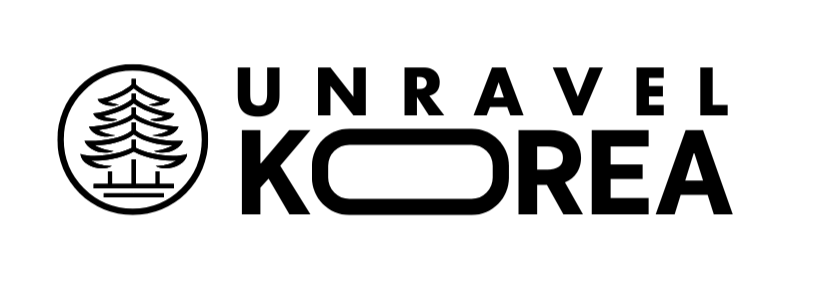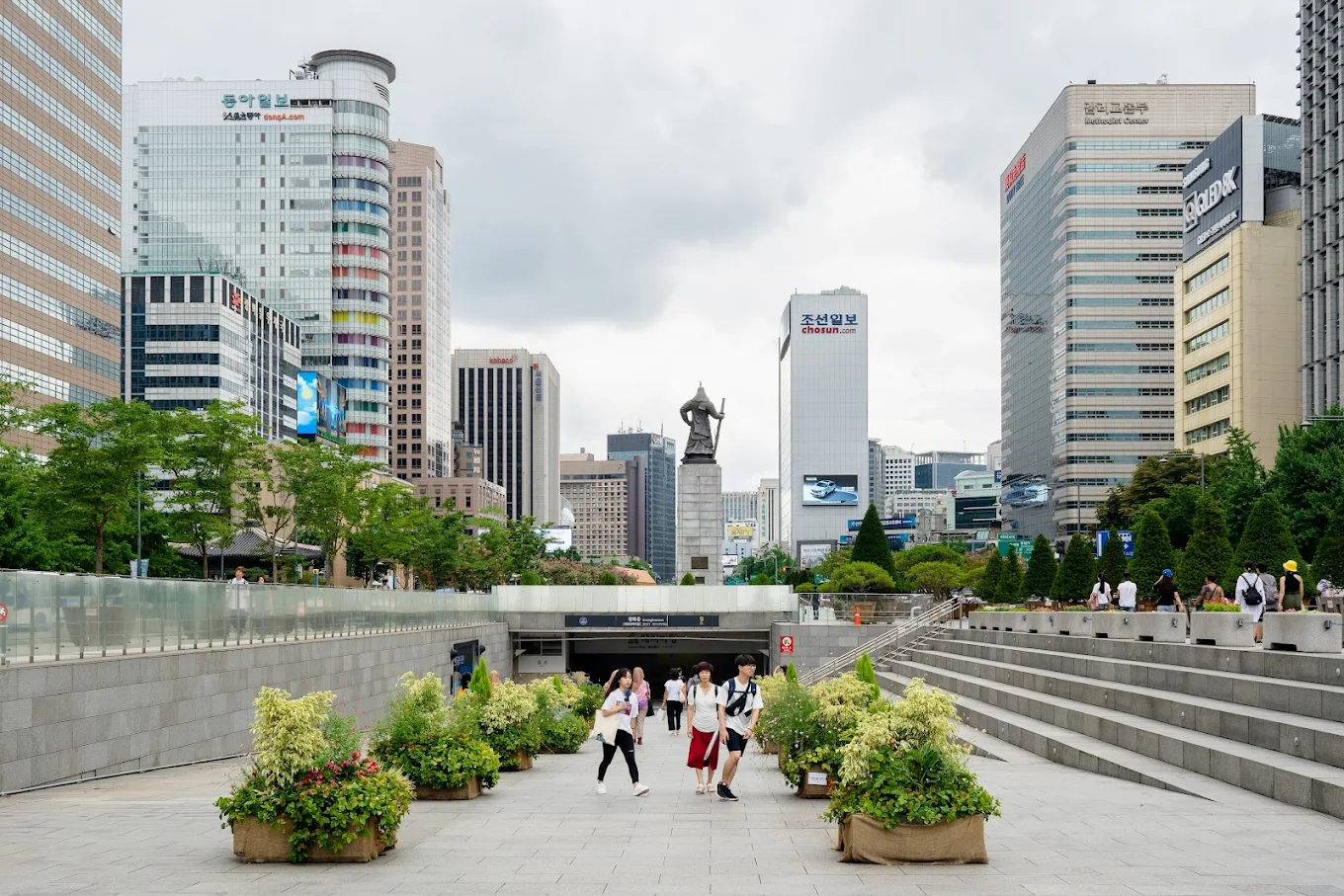Gwanghwamun Square is Seoul’s most important public plaza, located in the heart of the city between Gyeongbokgung Palace and Cheonggyecheon Stream. This historic square serves as both a cultural landmark and the center of Korean democracy, making it a must-visit destination for anyone exploring Seoul.
Crucial Info About Gwanghwamun Square
Gwanghwamun Square is famous for several significant features:
Historical importance: The symbolic heart of Korean democracy and political life
Royal connection: Main entrance pathway to Gyeongbokgung Palace since Joseon Dynasty
Cultural events: Major festivals, protests, and national celebrations
Famous statues: Monuments to King Sejong the Great and Admiral Yi Sun-sin
Government center: Surrounded by key government buildings including the Blue House area
Tourist gateway: Starting point for exploring Seoul’s historic Jongno district
Changing of the Guard: Regular ceremonial performances at nearby palace gates
Modern urban planning: Example of Seoul’s efforts to reclaim public space from traffic
Gwanghwamun Square is completely free to visit!
Gwanghwamun Square Distance to Gyeongbokgung Palace
Distance: Approximately 200 meters (about 650 feet)
Walking time: 3-5 minutes at a normal pace
The connection: Gwanghwamun Square serves as the approach plaza to Gyeongbokgung Palace
The layout:
Gwanghwamun Square starts at Sejongno intersection
Square extends northward toward the palace
Gwanghwamun Gate (palace entrance) is at the northern end of the square
The square was specifically designed to provide a grand approach to the palace
Here are my must-visit places in Seoul and here you can visit and see the 10 famous temples of Seoul that are very close to you.
How to Get from Gwanghwamun Square to Gyeongbokgung Palace
This is one of the easiest walks in Seoul since they’re directly connected!
Step-by-step directions:
- Stand anywhere in Gwanghwamun Square
- Face north (toward the mountains in the background)
- Walk straight north through the square
- Continue walking until you reach the large traditional gate
- That gate is Gwanghwamun Gate – the main entrance to Gyeongbokgung Palace
- Total walking time: 3-5 minutes
- Distance: About 200 meters
Visual landmarks to follow:
- Walk past King Sejong statue
- Continue past Admiral Yi Sun-sin statue
- Head toward the large traditional Korean gate
- The palace entrance is right through that gate
You’ll need to buy a ticket once you reach the palace entrance, but getting there from the square is just a short, straight walk.
Gwanghwamun Palace (Gyeongbokgung Palace)
Important clarification: There is no “Gwanghwamun Palace.” People often use this term because Gwanghwamun is the main gate, but the actual palace name is Gyeongbokgung Palace.
Gwanghwamun = The main gate of the palace
Gyeongbokgung = The actual palace name
Palace information:
- Built: 1395 during early Joseon Dynasty
- Significance: Main royal palace of the Joseon Dynasty
- Size: 432,703 square meters with over 300 buildings
- Entrance fee: 3,000 KRW (adults), 1,500 KRW (children)
- Hours: 9 AM – 5 PM (varies by season)
- Best known for: Changing of the Guard ceremony, throne halls, royal gardens
Gwanghwamun Square Statues
King Sejong the Great Statue
Location: Center-south area of the square
Significance: Korea’s most beloved king who created the Korean alphabet (Hangeul)
Features:
Large bronze statue showing the king in royal robes
Surrounded by information plaques in multiple languages
Underground Sejong Story exhibition beneath the statue
Popular photo spot for tourists
Why he’s honored here: King Sejong ruled during Korea’s golden age of culture and science, and his creation of Hangeul democratized literacy in Korea.
Admiral Yi Sun-sin Statue
Location: Center-north area of the square
Significance: Korean naval hero who defeated Japanese invasions in the 1590s
Features:
Imposing statue showing the admiral in military dress
Sword pointed toward the palace
Information about his famous turtle ships
Symbol of Korean military prowess and patriotism
Why he’s honored here: Yi Sun-sin is considered Korea’s greatest military hero, famous for never losing a naval battle despite being vastly outnumbered.
What to Do in Gwanghwamun Square
Sightseeing Activities
View the historic statues: Spend time learning about King Sejong and Admiral Yi Sun-sin
Palace approach walk: Experience the traditional approach to Gyeongbokgung Palace
Architecture appreciation: Admire the blend of traditional and modern Seoul
People watching: Observe Korean daily life and tourist activity
Photography: Capture iconic Seoul images with palace backdrop
Cultural Activities
Changing of the Guard: Watch the colorful ceremony at Gwanghwamun Gate
Underground exhibitions: Visit Sejong Story museum beneath King Sejong statue
Street performances: Enjoy buskers and cultural performers (weekends)
Festival participation: Join seasonal celebrations and events
Practical Activities
Tourist information: Get maps and advice at information centers
Rest and relaxation: Use benches and open spaces for breaks
Meeting point: Popular spot to meet friends before exploring Seoul
Transportation hub: Access multiple subway lines and bus routes
Combined Activities
Palace visit: Continue directly to Gyeongbokgung Palace
Stream walk: Walk south to Cheonggyecheon Stream
Shopping: Visit nearby Insadong or Myeongdong districts
Dining: Explore traditional restaurants in surrounding Jongno area
Getting There
By subway:
- Line 5: Gwanghwamun Station, Exit 2 or 8
- Line 3: Gyeongbokgung Station, Exit 4 or 5
- Line 1: Jonggak Station, Exit 3 or 4 (short walk)
By bus: Multiple city bus routes stop at Gwanghwamun
By taxi: Tell driver “광화문광장” (Gwanghwamun Square)
Nearby Attractions Within Walking Distance
- Gyeongbokgung Palace: 5 minutes north
- Cheonggyecheon Stream: 5 minutes south
- Insadong cultural district: 10 minutes east
- Bukchon Hanok Village: 15 minutes northeast
- Myeongdong shopping: 15 minutes south
Gwanghwamun Square serves as Seoul’s symbolic heart, connecting Korea’s royal past with its democratic present. Whether you’re beginning a palace tour, attending a cultural event, or simply want to experience the center of Korean political and cultural life, this historic square provides an essential Seoul experience that combines convenience, history, and cultural significance in one accessible location.

